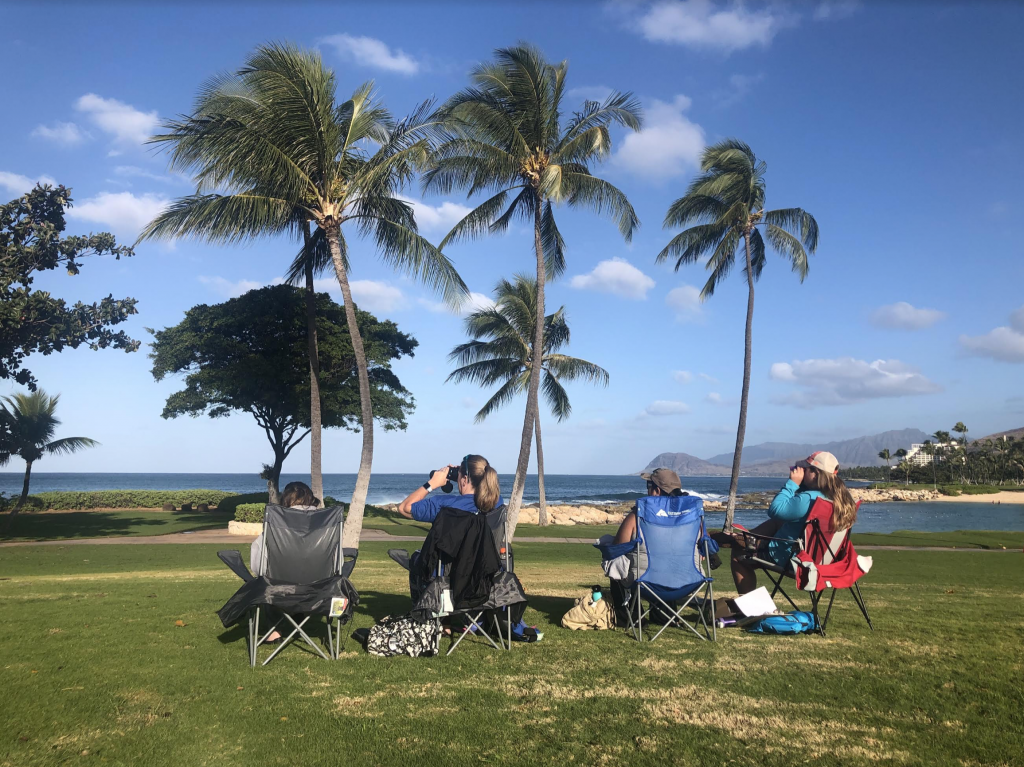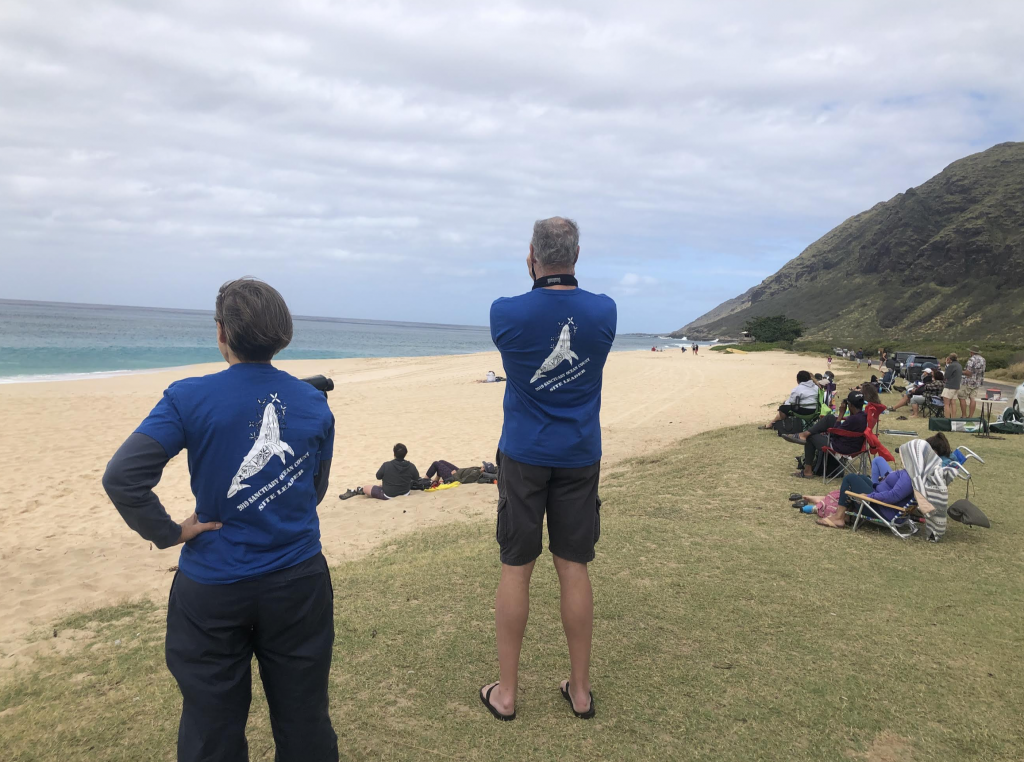Great Whale & Sanctuary Ocean Counts Commence
More than 570 volunteers gathered data from the shores of O‘ahu, Kaua‘i and Hawai‘i Islands during the first event of the 2019 Hawaiian Islands Humpback Whale National Marine Sanctuary Ocean Count, and on Maui with the Great Whale Count by Pacific Whale Foundation. During the federal government shutdown, the National Marine Sanctuary Foundation is coordinating Sanctuary Ocean Count events.

Sanctuary Ocean Count and Great Whale Count volunteers observe humpback whales from Kaua‘i, O‘ahu, Hawai‘i and Maui. Courtesy photo.
This is the first year that both counts are coordinated on the same days, ensuring the data from all main islands is collected simultaneously. It is also the first year that Pacific Whale Foundation is expanding their Great Whale Count on Maui from one month to three.
Combined, volunteers collected data from 51 sites across all the main islands. A total of 168 whale sightings were seen during the 8:30 to 8:45 a.m. time period, the most of any time period throughout the day’s count. Sanctuary Ocean Count volunteers collected data from 39 sites on the islands of Hawai‘i, O‘ahu and Kaua‘i on Jan. 26. A total of 96 whale sightings were seen during the 8:30 to 8:45 a.m. time period, the most of any time period throughout the day’s count. Great Whale Count volunteers collected data from 12 sites across Maui on Jan. 26 during timed intervals between 8:30 and 11:50 a.m. A total of 359 whales were seen throughout the day, with 72 whales counted during the 8:30 to 8:45 a.m. time period, the most of any time period throughout the day’s count.

Sanctuary Ocean Count and Great Whale Count volunteers observe humpback whales from Kaua‘i, O‘ahu, Hawai‘i and Maui. Courtesy photo.
Weather conditions were not ideal for whale viewing at most sites across the state due to strong winds and high surf. Those factors made visibility difficult for viewing whales. Although some sites were fortunate to have perfect whale viewing conditions with partly sunny skies. A variety of other species were also spotted during the count including sea turtles, spinner dolphins, Hawaiian monk seals, multiple sea bird species and more.
Ocean Count promotes public awareness about humpback whales, Hawaiian Islands Humpback Whale National Marine Sanctuary, and shore-based whale watching opportunities. Volunteer participants tally humpback whale sightings and document the animals’ surface behavior during the survey, which provides a snapshot of humpback whales activity from the shorelines of O‘ahu, Kaua‘i and Hawai‘i Islands.
The annual Great Whale Count by Pacific Whale Foundation brings volunteers together to count whales from shore as part of a long-term survey of humpback whales in Hawai‘i, with 12 survey sites along the shoreline of Maui. This event provides a snapshot of trends in relative abundance of whales and is one of the world’s longest-running citizen scientist projects.
Both counts will take place three times during peak whale season: the last Saturdays in January, February and March of 2019.

Sanctuary Ocean Count and Great Whale Count volunteers observe humpback whales from Kaua‘i, O‘ahu, Hawai‘i and Maui. Courtesy photo.
Preliminary data detailing Sanctuary Ocean Count whale sightings by site location are available online. After the shutdown, additional information will be available on Hawaiian Islands Humpback Whale National Marine Sanctuary’s website. Pacific Whale Foundation’s Great Whale Count data may be found online with additional information at pacificwhale.org.
The Hawaiian Islands Humpback Whale National Marine Sanctuary, which is administered by NOAA’s Office of National Marine Sanctuaries and the State of Hawai‘i Department of Land and Natural Resources, protects humpback whales and their habitat in Hawaiian waters where they migrate each winter to mate, calve and nurse their young.
The National Marine Sanctuary Foundation, established in 2000, is the official non-profit partner of the National Marine Sanctuary System. The Foundation directly supports national marine sanctuaries by protecting species, conserving ecosystems and preserving America’s maritime heritage through on-the-water conservation projects, public education and outreach programs and scientific research and exploration.
With a mission to protect the ocean through science and advocacy, and to inspire environmental stewardship, Pacific Whale Foundation (PWF) conducts Research, Education and Conservation programs for the communities in which it serves. Founded by Greg Kaufman in 1980 as a 501(c)(3) nonprofit organization dedicated to saving the world’s whales from extinction, PWF now operates a social enterprise that offers fee-based programs and services through PacWhale Eco-Adventures to help fund its nonprofit work. Combined with memberships, donations, charitable grants and a remarkable group of dedicated volunteers, PWF now reaches more than 400,000 individuals each year through its Maui and Australia offices and research projects in Ecuador and Chile.















